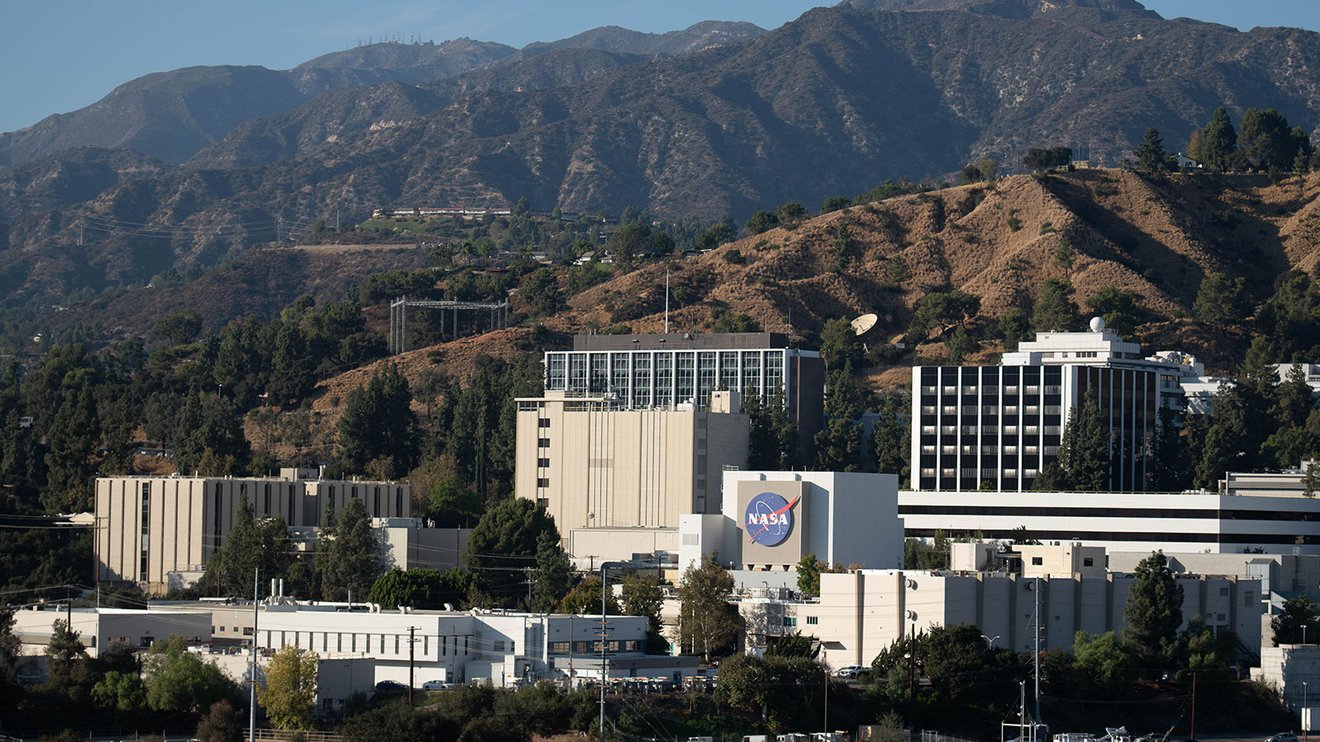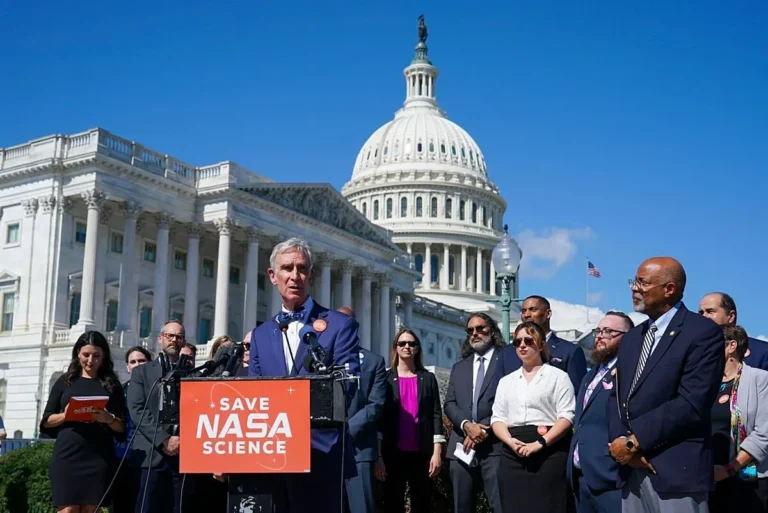
Key Takeaways:
- NASA's Jet Propulsion Laboratory (JPL) announced the layoff of approximately 550 employees, constituting 11% of its workforce, as part of an ongoing center reorganization initiated in July.
- JPL Director Dave Gallagher stated that these layoffs are designed to establish an appropriate organizational size, enhance fiscal discipline, and optimize core technical capabilities for future success, explicitly disassociating them from the current government shutdown.
- These personnel reductions occur in the context of broader directives from the White House Office of Management and Budget (OMB) for federal agencies to prepare for reductions in force and reorganizations.
- Representative Judy Chu (D-Calif.) and other critics expressed concerns regarding the potential loss of scientific knowledge and expertise, noting that the White House's proposed FY26 budget includes significant cuts to NASA's funding and workforce, which could jeopardize JPL-led missions.
NASA’s Jet Propulsion Laboratory (JPL) on Monday announced that it will lay off about 550 employees, or about 11 percent of its workforce.
According to JPL director Dave Gallagher, the move has nothing to do with the ongoing government shutdown, which the White House Office of Management and Budget (OMB) has pledged to use as an opportunity to permanently thin the federal workforce.
Per a message from Gallagher on JPL’s website, the layoffs are part of a center “reorganization” that began in July. They will affect personnel in technical, business, and support areas. Gallagher said the cuts will “establish an appropriate size to ensure future success.”
“This week’s action, while not easy, is essential to securing JPL’s future by creating a leaner infrastructure, focusing on our core technical capabilities, maintaining fiscal discipline, and positioning us to compete in the evolving space ecosystem—all while continuing to deliver on our vital work for NASA and the nation,” Gallagher wrote.
He added that JPL leadership in the past few months has “communicated openly with employees about the challenges and hard choices ahead.”
NASA employees have been aware of a potential agencywide reduction in force (RIF) for months. The OMB in February directed federal agencies to draw up RIF and reorganization plans. It followed that up in September, telling agencies to prepare RIFs for programs, projects, or activities that would lose discretionary funding should the government shut down.
“The RIFs have begun,” OMB director Russell Vought wrote in a social media post on Friday.
Vought and President Donald Trump have vowed to implement sweeping layoffs during the shutdown, breaking from the precedent of temporary furloughs. So far, tens of thousands of NASA employees are furloughed, with about 3,500 continuing to work without pay on critical programs such as Artemis.
While apparently unrelated to Vought and Trump’s pledge, the layoffs at JPL mark the first major RIF at NASA since the shutdown began.
JPL’s downsizing
The 168-acre JPL facility, located near Pasadena, California, is one of NASA’s most important field centers and the only such site that receives federal funding.
Spacecraft operated by JPL have flown to every planet in our solar system, through the sun’s rays, and into interstellar space. The center designed, built, and operated Explorer 1, the first U.S. satellite; the Ingenuity Mars helicopter, the first rotorcraft to fly under its own power on another planet; and all five rovers sent successfully to the surface of Mars. It also oversees the Deep Space Network, which enables deep-space communications for distant missions.
JPL has about 40 active missions, including the Europa Clipper and Juno probes studying Jupiter and its moons. On Mars, it operates the Curiosity and Perseverance rovers. The latter is collecting Martian rock and dust for a possible sample return mission, in which JPL is also heavily involved.
The laboratory employs about 5,500 NASA personnel and onsite subcontractors. But that figure is dwindling — in 2024, two rounds of layoffs affected more than 850 employees.
Representative Judy Chu (D-Calif.), who represents the district where JPL is located, on Monday called the latest round of cuts an “absolute tragedy.”
“JPL is a national asset that has helped the United States accomplish some of the greatest feats in space and science for decades,” Chu said in a statement. “Every layoff devastates the highly skilled and uniquely talented workforce that has made these accomplishments possible. Taken together with last year’s layoffs, this will result in an untold loss of scientific knowledge and expertise that threatens the very future of American leadership in space exploration and scientific discovery.”
In addition, several JPL-led missions — including Juno and Mars Sample Return — could be on the chopping block if the White House’s fiscal year 2026 (FY26) budget is implemented.
The budget proposes a 24 percent cut to NASA’s topline funding—the largest single-year reduction in its history. Science programs in particular face a nearly 50 percent cut that has been widely decried by the space community, from Mars exploration advocates to current and former NASA personnel. Democrats in Congress have pushed for a measure protecting this funding to be included in any continuing resolution (CR) that would reopen the government.
“I have led bipartisan appropriations requests to demand that Congress fully fund NASA’s Science Mission Directorate and protect all its missions,” Chu said Monday. “Most recently, I have been urging appropriators to include language in any short-term federal funding bill that would explicitly protect NASA’s budget and missions from any cuts.”
What’s next for NASA?
Regardless of whether the layoffs at JPL are tied to the government shutdown, they could be a sign of things to come.
Beyond cutting NASA’s funding, the White House budget request also calls to trim its workforce by about one-third, leaving it with just under 12,000 personnel. Of the approximately 18,000 employees NASA had at the start of 2025, more than 3,800 have taken deferred resignation programs (DRPs) that will see them depart by January.
In June, the space agency projected it would have about 14,000 employees at the start of 2026. That means it would need to lay off at least 2,000 more personnel to achieve the reductions outlined in the budget. To do that, it could turn to involuntary measures like RIFs. However, the American Federation of Government Employees (AFGE)—one of the two largest unions representing NASA employees—has filed a lawsuit and requested a temporary restraining order to block any mass firings during the shutdown.
AFGE and other unions have also filed suit against the Trump administration’s move to reclassify some agencies—including NASA—as having a national security mission, stripping union rights from their employees. Unions view the erosion of collective bargaining rights as another tool used by the White House to get employees to leave on their own accord, with AFGE describing it as an “assault.”
Editor’s note: This story first appeared on FLYING









